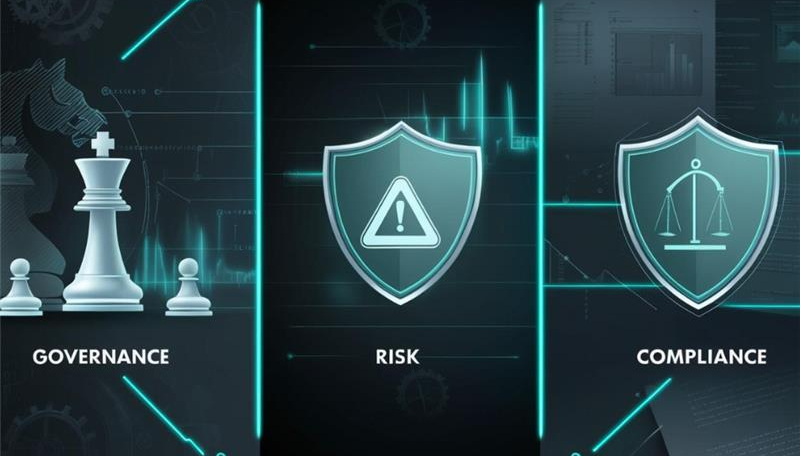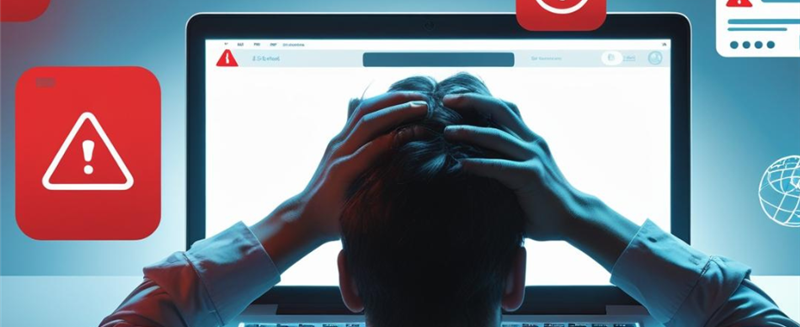Understanding the Three Pillars: Governance, Risk, and Compliance
In the technological realm of cybersecurity and business operations, organizations have to handle pressure to protect data, abiding by the laws and regulations, and for smooth ethical operations.
A key framework that helps manage these responsibilities is known as GRC — Governance, Risk, and Compliance. This trio is the basic framework of a structured approach to information security and overall enterprise flexibility. In this article, we will learn about each pillar and explain how they work together to create a solid cybersecurity strategy. Effective GRC management means organizations need to gather important risk data, validate compliance, and report results to management.

What is Governance?
Governance is the strategic pillar of GRC. It refers to the establishment of policies, processes, and decision-making frameworks that give direction to an organization’s overall cybersecurity and risk management.
Key Elements of Governance are:
- Policies and Procedures
- Roles and Responsibilities.
- Strategic Alignment
- Oversight and Performance Monitoring
What is Risk?
The second pillar of GRC is Risk Management. It focuses on understanding potential threats and vulnerabilities that could harm an organization — whether through data threats, financial loss etc.
Cyber risk refers to any risk that can hamper confidentiality, integrity, and availability.
Examples include malware, ransomware, phishing attacks, insider threats, and data breaches.
The steps in Risk Management are:
- Identify Risks
- Assess Risks
- Treat Risks
- Monitor Risks
Risk = Threat × Vulnerability × Impact
What is Compliance?
Compliance is the third pillar which is basically the practice of following laws and regulations that apply to your organization’s industry. In a nutshell, it is the organization’s ability to abide by laws, regulations, and internal standards relevant to its operations and industry. It’s widely understood that a positive reputation, garnering customer loyalty and confidence, and maintaining trust are critical factors that lead to success.
Types of Compliance:
- Regulatory Compliance: This includes rules and regulations set by the government like India’s DPDP Act, HIPAA, or GDPR.
- Industry Standards: this includes an industrial set of rules and regulations like ISO 27001, and NIST.
- Internal Compliance: This includes internal laws like company-specific policies that vary from company to company, code of conduct and ethical guidelines.
Benefits of Compliance are:
- Protects their reputation
- Maintains customer or client trust
- Builds customer confidence and loyalty
- Helps identify, interpret, and prepare for potential data breaches
- Improves an organization’s security posture
How these 3 pillars work hand in hand
The 3 pillars work hand in hand for the smooth functioning of an enterprise or a company that is free of data breaches, internal threats and also abides by the rules and regulations important for the safety and integrity of data.
- Governance provides direction: “What should we do?”
- Risk tells you: “What could go wrong?”
- Compliance answers: “Are we doing it right?”
In order to run any data-driven enterprise or product whether it is a smart phone or a social media app like WhatsApp and Facebook that stores people’s personal data. GRC will give a path to ensure its proper functioning.
‘GOVERNANCE’ will ensure that the data privacy policies are in place and the developers have worked to their expectations in providing security to its users.
‘RISK MANAGEMENT’ identifies if there are any security breaches and privacy violations in the customer’s personal data storing apps.
‘COMPLIANCE’ requires abiding by the laws and regulations like GDPR and ensuring internal data protection.
Conclusion
The 3 pillars of GRC-Governance, Risk, and compliance are a necessity in today’s digital era for any organization. These pillars are essential to prevent data threats and legal penalties resulting in business growth by creating a secure and trustworthy environment.
A balanced GRC approach in any enterprise makes it reliable for its users and customers thus ensuring an ecosystem with maximum protection of the privacy and integrity of the users.




